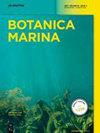基于线粒体单倍型分析对日本裙带菜种群隐性入侵的评估
IF 1.4
4区 生物学
Q2 MARINE & FRESHWATER BIOLOGY
引用次数: 0
摘要
为了提高海藻海产养殖的质量和数量,经常从与养殖地点地理位置不同的地区引进幼苗。尽管作为应对全球变暖的一种措施,对海藻养殖的需求日益增加,但对这种引进的影响却没有进行充分的研究。在此,我们利用褐藻物种裙带菜(Undaria pinnatifida)评估了通过海产养殖发生的隐性入侵程度。日本濑户内海使用的栽培材料是 20 世纪 70 年代从日本北部引进的。基于日本裙带菜种群之间清晰的遗传结构,我们比较了濑户内海野生种群和栽培材料之间的线粒体单倍型。所有被分析的栽培材料都具有日本北部的单倍群。在野生种群中,尤其是濑户内海东部的野生种群中,发现了多个单倍群。在栽培材料和野生个体中都观察到了一些日本北部单倍群。在裙带菜栽培地附近的几个地点,日本北部单倍群占主导地位。这些结果有力地表明,这里发生了通过裙带菜海产养殖进行的隐性入侵,尽管其生态影响尚不清楚。即使存在本地同种种群,来自其他地区的海产养殖幼苗也有明显的入侵风险。本文章由计算机程序翻译,如有差异,请以英文原文为准。
Evaluation of cryptic invasion in Japanese Undaria populations based on mitochondrial haplotypic analysis
To improve the quality and quantity of seaweed mariculture harvests, seedlings are frequently introduced from regions geographically apart from cultivation sites. The effects of such introduction have been insufficiently studied, despite increasing demands on seaweed cultivation as a measure against global warming. We here evaluated the degree of cryptic invasion occurring through mariculture using a brown algal species, Undaria pinnatifida . Cultivated materials used in the Seto Inland Sea, Japan, were introduced from northern Japan in the 1970s. Based on the clear genetic structure among Japanese Undaria populations, we compared mitochondrial haplotypes between wild populations and cultivated materials in the Seto Inland Sea. All cultivated materials analyzed had haplogroups native to northern Japan. Multiple haplogroups were observed in the wild populations, especially those in the eastern Seto Inland Sea, which is exceptional considering the reported genetic structure. Some northern Japan haplotypes were observed both in cultivated materials and wild individuals. A northern Japan haplogroup was predominant at several sites near Undaria -cultivation sites. These results strongly suggested that cryptic invasion through Undaria mariculture occurred here, although its ecological impact remains unclear. There is a clear risk of invasion by mariculture seedlings from other regions, even when native conspecific populations are present.
求助全文
通过发布文献求助,成功后即可免费获取论文全文。
去求助
来源期刊

Botanica Marina
生物-海洋与淡水生物学
CiteScore
4.10
自引率
4.50%
发文量
43
期刊介绍:
Botanica Marina publishes high-quality contributions from all of the disciplines of marine botany at all levels of biological organisation from subcellular to ecosystem: chemistry and applications, genomics, physiology and ecology, phylogeny and biogeography. Research involving global or interdisciplinary interest is especially welcome. Applied science papers are appreciated, particularly when they illustrate the application of emerging conceptual issues or promote developing technologies. The journal invites state-of-the art reviews dealing with recent developments in marine botany.
 求助内容:
求助内容: 应助结果提醒方式:
应助结果提醒方式:


